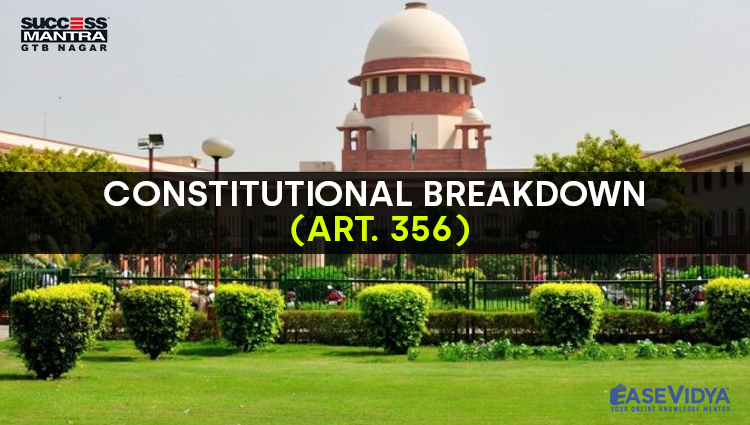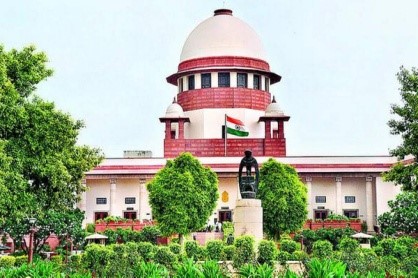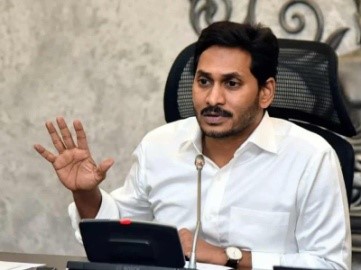
CONSTITUTIONAL BREAKDOWN ARTICLE 356
QUESTION OF CONSTITUTIONAL BREAKDOWN (ART. 356)

Recently, the Supreme Court stayed the Andhra Pradesh High Court order that sought to convene a suo moto judicial inquiry into whether there is a “constitutional breakdown” in the Andhra Pradesh Government. This was clearly a case of judicial overreach by the A.P. High Court. The question of a “constitutional breakdown” or the failure of constitutional machinery is dealt with under Article 356 of the Constitution, whose invoking comes under the prerogative of the executive and not the judiciary. Though the Supreme Court has rightfully intervened in a tussle between the judiciary and the elected government in Andhra Pradesh, the A.P High court’s order opens up the possibility of use or even misuse of Article 356 by the judiciary. Hence, there is a need for making essential changes to the constitution, so as to stop the misuse of Article 356 and strengthen Indian Federalism in true spirit.
ARGUMENTS OF THE STATE

• Unprecedented: The order of the High Court, on October 1, came while deciding habeas corpus petitions filed by relatives of persons remanded in judicial custody or on bail. The High Court had suo motu summoned the State counsel to assist it in deciding “whether in circumstances prevailing in the State of AP, the court can record a finding that there is constitutional breakdown in the State or not”.
• Lacks Basis: The state government then asked for that order to be recalled, saying none of the original applications had asked the question of “Constitutional Breakdown”.
• Against Article 356: Judiciary has no role in deciding whether there is Constitutional breakdown in the state, necessitating President’s rule. This power is vested in the executive under Article 356 of the Constitution.
• Against Doctrine of Separation of Powers: The HC Order is a “serious encroachment” on the powers of the executive as enumerated under the Constitution and is thus violative of doctrine of Separation of powers.
• Appealed to Supreme Court: The order was clearly seen as a case of judicial over-reach by the A.P. High Court and was thus appealed to Supreme Court
SAY OF SUPREME COURT OVER THE ISSUE
• The Supreme Court stayed the order issued by the AP High Court asking the Andhra Pradesh government whether there was breakdown of constitutional machinery in the state. Supreme Court observed that they had not seen any order issued like this by the AP High Court in any case and the apex court found it to be disturbing. The Court directed issue of notice and stay and ordered the registry to list the case after the Supreme Court vacation.
• The HC was shocking as it opens up the possibility of use or even misuse of Article 356 by the judiciary. The Supreme Court’s order comes in the wake of incidents pointing to a tussle between the judiciary and the elected government in Andhra Pradesh. CM Jagan Mohan Reddy had, in an unprecedented letter to the CJI, complained about the alleged hostile attitude of the High Court against him and his government besides making controversial allegations against a senior Supreme Court judge. The onus is now on the Supreme Court to put an end to the unseemly tussle between the judiciary and government in the State. Ordering an internal inquiry into the Chief Minister’s letter would be a good beginning. A clear nullification of the High Court order will also ensure that such legal adventures impinging upon the separation of powers in the State are not repeated.
BACKGROUND OF ARTICLE 356

No liberal democratic Constitution in the world has a provision such as an Article 356 that gives the central government the power to dismiss a democratically-elected State government except the Constitution of Pakistan. Both India and Pakistan borrowed this provision from the Government of India Act, 1935. The leaders of the Indian freedom struggle were so very opposed to this provision that they forced the British government to suspend it. Section 93 of the Government of India Act, 1935 was never brought into effect. However, the provision which we had opposed during our freedom struggle was incorporated in the Constitution for the preservation of democracy, federalism and stability in the post-independent era.
ARTICLE 356 AND MISUSE OF POWER
Even though B.R. Ambedkar had assured that it would remain a dead letter, Article 356 has been used/misused more than 125 times. In almost all cases it was used for political considerations rather than any genuine breakdown of constitutional machinery in the States. Former Prime Minister Indira Gandhi used Article 356 as many as 27 times, and in most cases to remove majority governments on the ground of political stability, absence of clear mandate or withdrawal of support, etc. In retaliation, the Janata government removed nine state Congress governments, when for the first time they formed the government in 1977. Indira Gandhi on her return to power in 1980 removed nine Opposition majority governments at one go. Subsequent governments too acted in a similar fashion.
SAFEGUARDS RELATED TO ARTICLE 356
The 1994 Supreme Court (S.R. Bommai case) majority decision, in essence, overturned a long tradition that the use of Article 356 was not really subject to review by courts, a doctrine articulated in a landmark 1977 case, State of Rajasthan vs Union of India. The Bommai case verdict laid down the conditions under which State governments may be dismissed, and mechanisms for that process. In the S.R. Bommai case, a nine-member bench of the Supreme Court construed the scope of Article 356, which also allows the imposition of President’s Rule in the States, with stringent conditions. These included ascertaining whether objective conditions exist which render it impossible to carry out governance in the State where the proclamation has been made and the process has to be approved by both Houses of Parliament before consideration for judicial review.
CONCLUSION
• Judiciary Restraining Itself: Judiciary should realise that Judicial activism may be good as a rare exception but an activist judiciary is neither good for the country nor for the judiciary itself.
• Fine-tuning Role of Governor: In order for the smooth functioning of democratic government and strengthening the spirit of federalism, it is important that the governor must act judiciously, impartially and efficiently while exercising his discretion and personal judgment. In this context, the recommendations of the Sarkaria Commission and Punchhi Commission should be followed in true spirit. For example, the 'procedure for appointment of governors should be clearly laid down' and conditions of appointment must also be laid down and must assure a fixed tenure for the governor.
• Need for President’s Activism: President under the Indian constitution is bound by the aid and advice of the Indian Constitution. However, the President can use its suspensive veto in case of malicious application of Article 356. For example, former president K.R. Narayanan twice returned the cabinet’s recommendation on October 22, 1997, in respect of the Kalyan Singh government in Uttar Pradesh which had just won the controversial confidence vote and stating that imposition of President’s Rule would be constitutional impropriety.
• The nullification of the A. P High Court order by the Supreme Court will ensure that such legal adventures impinging upon the separation of powers in the State are curtailed. However, in order to prevent repeated misuse of Article 356 major constitutional amendments and strong political will is required.
QUESTIONS (1-5)
Q.1 Recently, the Supreme Court stayed the order of which of the following state's High Court that sought to convene a suo moto judicial inquiry into whether there is a “constitutional breakdown” in that state?
A. Andhra Pradesh High Court: ANSWER
B. Telangana High Court
C. Karnataka High Court
D. Kerala High Court
Q.2 Which of the following terms relates to an action taken by a court of its own accord, without any request by the parties involved?
A. Ab initio
B. Actus reus
C. Ad idem
D. Suo Moto: ANSWER
Q.3 Which of the following Articles states that the central government has the power to dismiss a democratically-elected State government or to impose President's rule in that state?
A. Article 352
B. Article 32
C. Article 256
D. Article 356: ANSWER
Q.4 The provision of Imposing Emergency at state or central Level which is envisaged in the Indian Constitution is borrowed from which of the following nations?
A. Constitution of USA
B. Government of India Act, 1935: ANSWER
C. Constitution of UK
D. Regulating Act, 1773
Q.5 The power to impose State Emergency during the breakdown of Constitutional machinery is first imposed in which of the following states?
A. Uttar Pradesh
B. Punjab
C. Jammu and Kashmir
D. Tamil Nadu












Joshuakarty
https://continent-telecom.com/virtual-sms-number
ThomasNaw
https://athens-rentalcars.com/
codigo betcha
It agree, it is an amusing phrase
1xbet in
You are not right. I can prove it.
20bets
Quite right! It is good thought. I call for active discussion.
avenue18
I can consult you on this question. Together we can come to a right answer.
1xcasinouz
This amusing message
melbetbdofficial
I consider, that you are mistaken. I can prove it. Write to me in PM.
1x-bet-india
Aha, so too it seemed to me.
Williamspems
https://www.tupalo.net/@u8202483
Rickeyarike
https://winnita-promocode.com/
Elliottcak
https://dissertation-now.com/biographies/